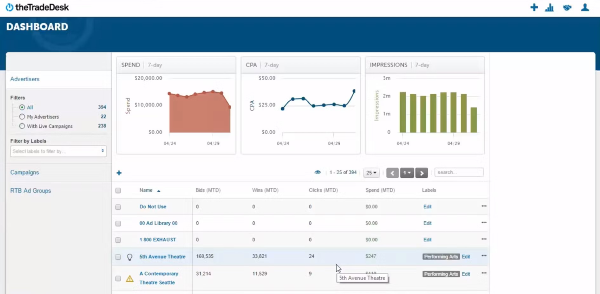Microsoft Corporation (NASDAQ: MSFT) has undergone a significant transformation over the past decade, evolving from a company centered around Windows and Office products to a tech powerhouse dominating cloud services, artificial intelligence (AI), and subscription-based offerings. In this article, we’ll explore Microsoft’s business model, financial metrics, and whether it’s worth investing in today.
Microsoft’s Business Segments: Diversified and Dominant
Microsoft’s revenue streams span several segments, showcasing the company's diversified business model:
Devices (2% of Revenue): This segment generates revenue from Surface laptops, tablets, and other hardware. Despite contributing only $4.7 billion annually, it highlights the company’s presence in hardware.
Dynamics Products and Cloud Services: Microsoft provides tools for managing sales and customer data, competing with industry giants like Salesforce.
Enterprise Services: This segment helps businesses deploy and manage Microsoft’s software solutions, generating service fees.
Gaming Division (9% of Revenue): Fueled by Xbox and subscription services, the gaming segment saw a jump in revenue to $21 billion after the Activision Blizzard acquisition in late 2023.
LinkedIn: A professional networking platform that has become a valuable asset in Microsoft's portfolio.
Microsoft Office Systems: Office 365 and software products like Excel and Word account for significant subscription revenue.
Search and News Advertising: Revenue from Bing and MSN ads adds a minor yet relevant contribution.
Intelligent Cloud (40% of Revenue): Azure is the backbone of Microsoft’s cloud offerings, growing rapidly due to increasing demand for AI and cloud services. The company’s partnership with OpenAI ensures exclusive hosting rights for ChatGPT on Azure, driving substantial growth.
Windows: Once a major revenue driver, Windows now contributes a smaller portion, growing modestly compared to other segments.
Financial Metrics: Stability and Growth
Revenue Growth
Microsoft’s revenue has grown significantly in recent years, shifting from traditional software sales to subscription services. In 2023, revenue reached $281 billion, driven by the expansion of cloud services and subscription products. Microsoft’s ability to sustain double-digit growth for six out of the past eight years highlights its exceptional scalability.
Profit Margins
Microsoft boasts impressive 36% profit margins, showcasing its ability to efficiently generate income. Comparatively, Apple has higher overall revenue but lower growth in net income stability, giving Microsoft an edge in profitability trends.
Income Stability
Microsoft maintains a high stability score in the 80s for net income and 90s for revenue, reflecting reliable growth. In contrast, Apple’s net income stability has seen declines recently, emphasizing Microsoft’s consistent upward trajectory.
Valuation: Is MSFT Undervalued?
Microsoft’s stock remains appealing based on its evolving business model and financial performance. Growth in cloud services, AI, and subscription revenue positions the company for continued expansion. While traditional valuation methods like price-to-earnings (P/E) may indicate the stock’s premium, its strategic moves and profitability justify its market price.
The Bottom Line
Microsoft’s transformation into a subscription-based and cloud-focused business has solidified its position as a leader in the tech industry. With diversified revenue streams, strong profit margins, and a reliable growth trajectory, Microsoft’s stock is an attractive option for long-term investors.
What are your thoughts on Microsoft stock? Share your opinions in the comments below!
https://youtu.be/wyCQuzCkjIc?si=ok77LLaTDyeO-X-D































Microsoft Corporation (NASDAQ: MSFT) has undergone a significant transformation over the past decade, evolving from a company centered around Windows and Office products to a tech powerhouse dominating cloud services, artificial intelligence (AI), and subscription-based offerings. In this article, we’ll explore Microsoft’s business model, financial metrics, and whether it’s worth investing in today.
Microsoft’s Business Segments: Diversified and Dominant
Microsoft’s revenue streams span several segments, showcasing the company's diversified business model:
Devices (2% of Revenue): This segment generates revenue from Surface laptops, tablets, and other hardware. Despite contributing only $4.7 billion annually, it highlights the company’s presence in hardware.
Dynamics Products and Cloud Services: Microsoft provides tools for managing sales and customer data, competing with industry giants like Salesforce.
Enterprise Services: This segment helps businesses deploy and manage Microsoft’s software solutions, generating service fees.
Gaming Division (9% of Revenue): Fueled by Xbox and subscription services, the gaming segment saw a jump in revenue to $21 billion after the Activision Blizzard acquisition in late 2023.
LinkedIn: A professional networking platform that has become a valuable asset in Microsoft's portfolio.
Microsoft Office Systems: Office 365 and software products like Excel and Word account for significant subscription revenue.
Search and News Advertising: Revenue from Bing and MSN ads adds a minor yet relevant contribution.
Intelligent Cloud (40% of Revenue): Azure is the backbone of Microsoft’s cloud offerings, growing rapidly due to increasing demand for AI and cloud services. The company’s partnership with OpenAI ensures exclusive hosting rights for ChatGPT on Azure, driving substantial growth.
Windows: Once a major revenue driver, Windows now contributes a smaller portion, growing modestly compared to other segments.
Financial Metrics: Stability and Growth
Revenue Growth
Microsoft’s revenue has grown significantly in recent years, shifting from traditional software sales to subscription services. In 2023, revenue reached $281 billion, driven by the expansion of cloud services and subscription products. Microsoft’s ability to sustain double-digit growth for six out of the past eight years highlights its exceptional scalability.
Profit Margins
Microsoft boasts impressive 36% profit margins, showcasing its ability to efficiently generate income. Comparatively, Apple has higher overall revenue but lower growth in net income stability, giving Microsoft an edge in profitability trends.
Income Stability
Microsoft maintains a high stability score in the 80s for net income and 90s for revenue, reflecting reliable growth. In contrast, Apple’s net income stability has seen declines recently, emphasizing Microsoft’s consistent upward trajectory.
Valuation: Is MSFT Undervalued?
Microsoft’s stock remains appealing based on its evolving business model and financial performance. Growth in cloud services, AI, and subscription revenue positions the company for continued expansion. While traditional valuation methods like price-to-earnings (P/E) may indicate the stock’s premium, its strategic moves and profitability justify its market price.
The Bottom Line
Microsoft’s transformation into a subscription-based and cloud-focused business has solidified its position as a leader in the tech industry. With diversified revenue streams, strong profit margins, and a reliable growth trajectory, Microsoft’s stock is an attractive option for long-term investors.
What are your thoughts on Microsoft stock? Share your opinions in the comments below!
https://youtu.be/wyCQuzCkjIc?si=ok77LLaTDyeO-X-D